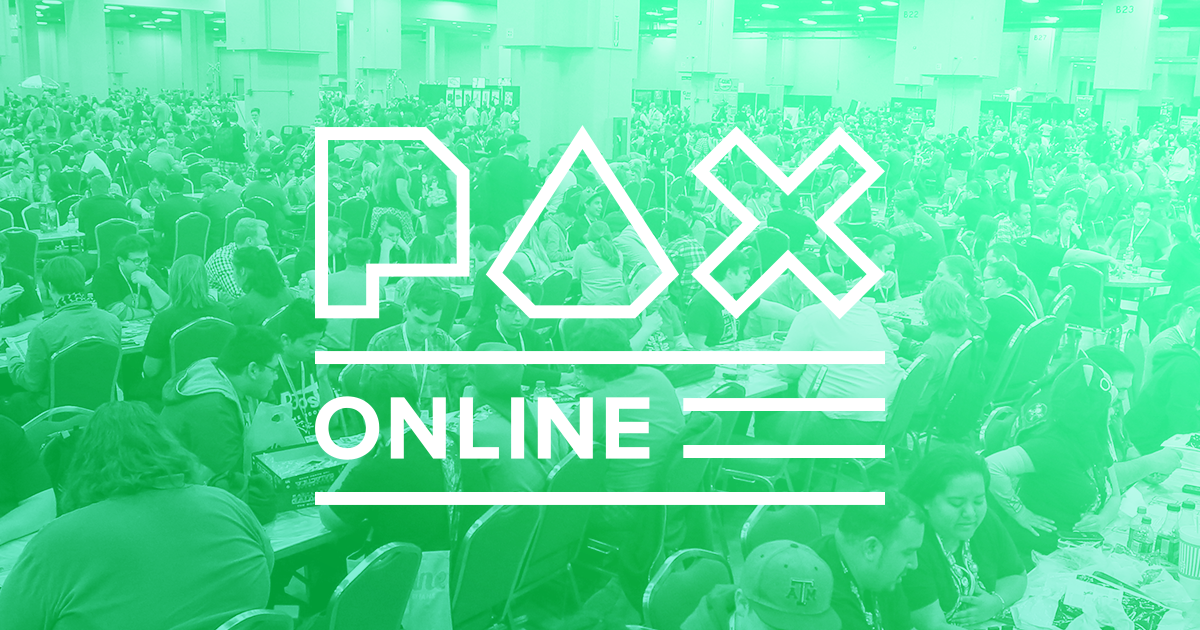The COVID-19 pandemic has wreaked havoc on nearly every industry. And while video game makers have largely benefitted from being the only entertainment medium perfectly suited for lockdown, adjacent industries have suffered, especially live events.
Some event organizers, like GDC, the Game Devs of Color Expo, and Boston FIG have made exceptional strides in pivoting to an online format. Others have stumbled along the way. The ESA failed to pull an online E3 together despite months of lead time. This gave developers and publishers incentive to go it alone or team up for their own digital presentations.
ReedPop, the company behind the PAX family of events, attempted to merge PAX West and Eurogamer Expo (EGX) into a mega-digital event called PAX Online. Unfortunately, things didn’t go so well. (For more, listen to Episode 61 of the Virtual Economy Podcast.)
ReedPop acknowledged as much to us in written answers to questions we submitted. “Like any event shifting to a digital-only presence to prioritize the health of our communities, PAX Online is a brand-new undertaking, filled with successes and unforeseen challenges,” a representative told us via email. “Should we find ourselves in a position where we would need to host another PAX Online, we will take into account the external and internal feedback we have received, improving our processes so we can provide the level of service our exhibitors expect of us and we expect of ourselves.”
With the cancelation of PAX East’s June dates, another PAX Online is happening. “In light of ongoing public health concerns, ReedPop and Penny Arcade will not hold PAX East this year,” the company said in a statement. “Given the United States’ progress towards addressing COVID-19 in recent months, we are cautiously optimistic PAX West and PAX Unplugged will proceed as planned with in-person festivities Sept. 3-6 and Dec. 10-12, respectively.
“Since we can’t wait until September to reconnect with the wonderful PAX community, PAX Online will return July 15-18. We hope to build on the success of last year’s record-breaking event and also engage with our community in new ways, such as the Indie Showcase that will take place between now and PAX Online. Expect to hear more about these exciting plans soon.”
ReedPop has some work to do in three key areas in order to woo exhibitors for its second attempt.
The Price Is Wrong
At the risk of understating things, exhibiting at events is expensive. The costs start at booth space, which is one of the few things paid directly to the event company. From there, you have to worry about:
- Booth construction
- Union labor for loading into the hall and unloading at the end of the event
- Lighting / Hanging and Rigging / Electrical / Plumbing
- Internet access
- Carpeting
- Table and chair rental
- Transportation for your team
- Hotel rooms for your team
- Per diem / meals for your team
- Food and water at your booth (for larger events like E3)
- Booth equipment – some exhibitors purchase inexpensive TVs locally and then raffle them off at the end of the event, because it’s less expensive than shipping
- (And more)
Here’s the E3 2018 exhibitor manual in all its 290-page glory so you can get an idea of everything exhibitors have to consider when gearing up for a trade show.
For the purposes of our discussion, we’re going to focus just on the cost for the floor space, which can vary drastically from event to event.
For instance, according to Virtual Economy’s sources, E3 booths were priced at $17 – $35 per square foot in 2019. The $17 per square foot rate was for ESA member organizations and applied to the 20,000 square foot booth footprint for a total of $340,000 for the booth alone. The price per square foot increases as the total booth size decreases, because the ESA likes to push exhibitors to the larger footprint.
For many exhibitors that 20,000 square foot booth ($340,000) can turn into $4 million when you include everything (food, staffing, labor, etc.). Shows like GameStop Expo, the price can be between $10 and $30 per square foot.
For PAX, it varies depending on which show you’re talking about. PAX South booths in 2020 ranged from $1,450 for a 100-square-foot booth ($14.50 per square foot) to $54,375 for a 2,500-square-foot space ($21.75 per square foot).
For PAX East, a larger event, booth space starts at $1,950 for a 100-square-foot booth ($19.50 per square foot) to $75,000 for a 2,500-square-foot space ($30 per square foot). As you can see, exhibiting at PAX is a much more affordable alternative due to scale rather than cost per square foot of booth space, with the largest E3 booths measuring eight times the size of the largest PAX booth.
So, with those costs in mind, let’s have a look at the pitch deck for PAX Online 2020.
As you can see, ReedPop was asking first-party platform holders to pony up $250,000 for a top tier “booth” package. Sony, Microsoft, and Nintendo passed, according to the digital “show floor” from the event.
For third-party developers and publishers, the rates started at $3,000 for indies and tabletop devs (and notably 50% more than the smallest physical booth space at PAX East) and capped out at $190,000.
Here are the different “booth” sizes as they appeared in the pitch deck and a comparison with how they appeared on the actual “digital show floor”:
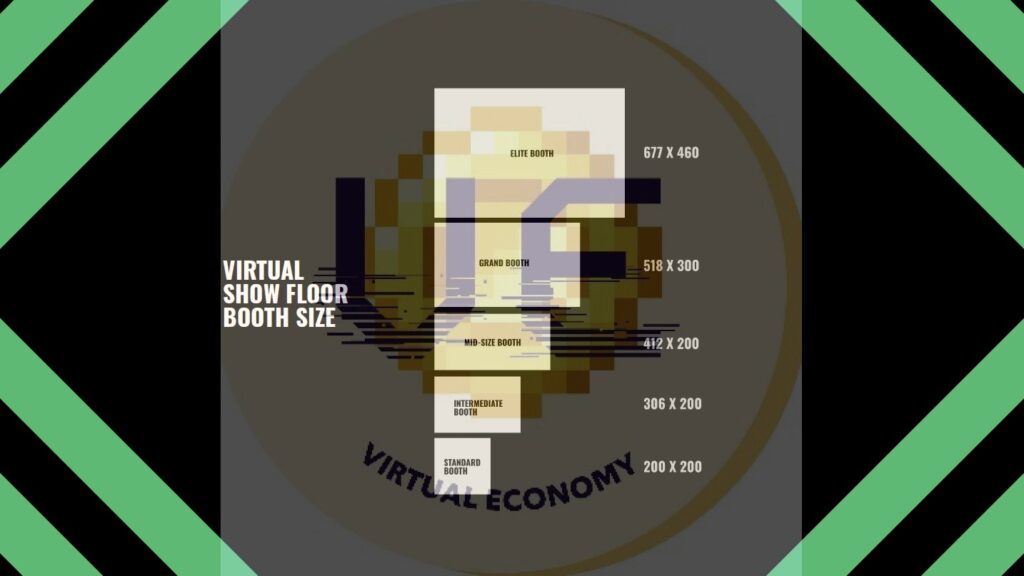
PAX Online Proposed “Digital Booth” Sizes 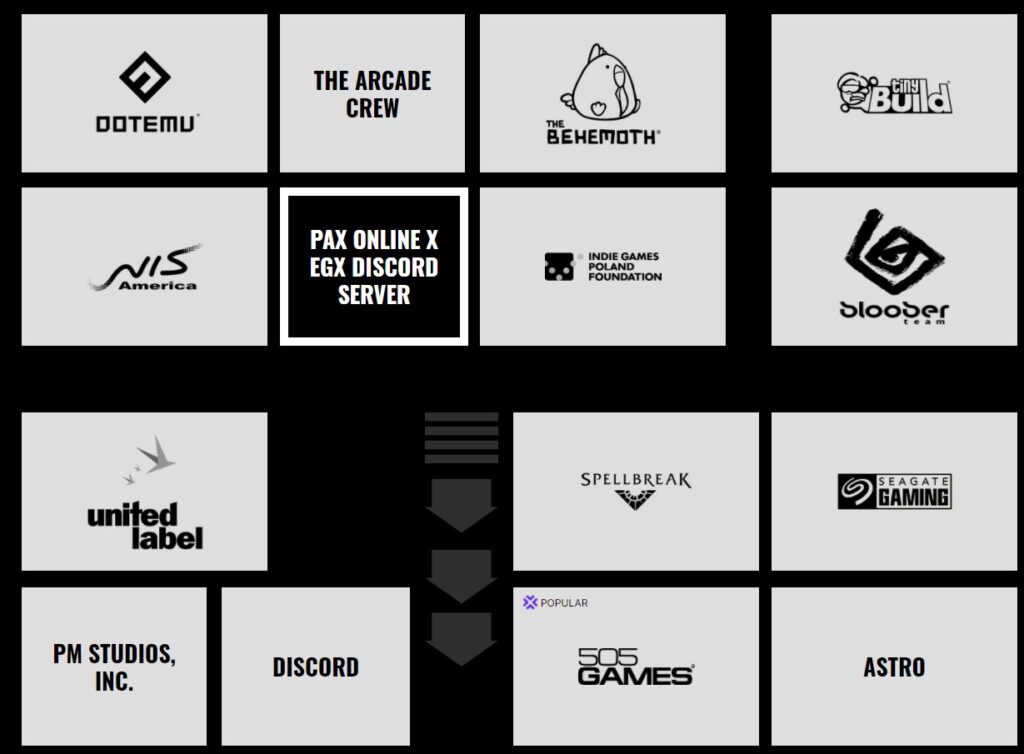
A Section of the PAX Online “Show Floor”
Note that it appears based on comparison between the deck’s pixel dimension slide and the actual show floor that the largest booth size ReedPop sold was the Intermediate Booth at $18,500. That means the mid-size ($56,000), grand ($190,000), and first-party elite ($250,000) were unsold.
We recognize that we’re not quite comparing apples to apples yet, so we ran some numbers. When exhibiting at PAX East, you can opt in for a variety of upsells. These include:
- 50×50 Booth (2,500 square feet) – $75,000
- Lanyard Sponsor* – $13,000
- Digital Show Specials Presenting Sponsor (On-site, social, and mobile branding) – $15,000
- Digital Show Specials Insert (a digital coupon in the PAX Mobile App) – $1,200
- PAX Mini Map Back Cover (show program) – $5,500
- A two-page spread advertisement in the program… – $8,500
- … and the Back Cover – $7,750
- An insert with the pre-registration mailer – $8,500
- A trailer on the Boston Convention center video wall for six minutes each hour – $12,250
- A paid panel in the main theatre (we’ll talk more about this later) – $13,500
- Floor Clings (at the entrance to the two main escalators)*… – $8,500
- … And signs above the escalators*… – $9,000
- … And signage in the East Lobby*… – $7,500
- … And signage in the PC/Console areas*… $7,500
- … And a 38×87 inch, double-sided meterboard sign* – $2,500
- Appearance in the PAX e-newlsetter – $1,000
- Advertising on the lower-third during streamed panels – $20,000
- A digital stream trailer to run between panels – $6,500
- A banner ad on the PAX website (100,000 impressions) – $850
- Remarketing (marketing to people who previously engaged with you) web banners (250,000 impressions) – $2,400
- Platinum Sponsorship for the PAX Mobile App – $25,000
GRAND TOTAL: $264,450
Obviously, it’s highly unlikely that any one exhibitor would take advantage of every single marketing opportunity at the highest (or in some cases, exclusive) level. Each of these items has a tangible, trackable metric associated with it.
The pricing was out of whack, and PAX Online 2021 needs to make some serious adjustments to the fees in order to have any chance of reaching critical mass. According to a number of industry sources we spoke with, the costs were an immediate “no” on exhibiting.
One source told us, “We had already decided to do the bare minimum for the event – not produce any new assets or try to make a big splash with any new announcements during the PAX timeframe, as we had very little confidence that the event would yield good results. The reason we decided to still go forward with a ‘booth’ at PAX Online is for the Steam featuring. We’ve found great ROI with pretty much everything we’ve done in terms of Steam marketing, so we basically figured it was worth our involvement/investment just for that.
“We did see a lift in wishlists on our games, which is the only real metric we can go by to determine if it was worth it… I had trouble even finding our little square on the site. Would we do it again? Yes, probably, but in the same way – choosing the lowest tier of involvement and putting absolutely none of our internal resources into creating new trailers or other assets for the event.”
But the sticker shock isn’t the only problem with PAX Online’s first outing. Marketing is about return on investment and, as you can see in the pitch deck above, the value wasn’t spectacular.
Two Words: “Value Add”
The last 12 months have shown us that developers and publishers deliver their messaging to consumers without live events. Is it the same? No. Is the engagement as good? In most cases, no. But they can do just as much, if not more on their own.
There is still room and need for well-run live events in the post-pandemic world. And, PAX remains one of my favorite to attend as a live event. There are usually a number of great exhibitors, panels, and a friendly and safe atmosphere (thanks to the tireless work of the Enforcers, especially).
PAX Online is a different story, though. A digital event doesn’t have foot traffic, a key driver at physical events. Earlier, we talked about all the ways exhibitors can choose to amplify their messaging for a PAX event. Each of these is trackable.
Now, let’s look at what PAX was offering for its top-tier third-party “booth” ($190,000):
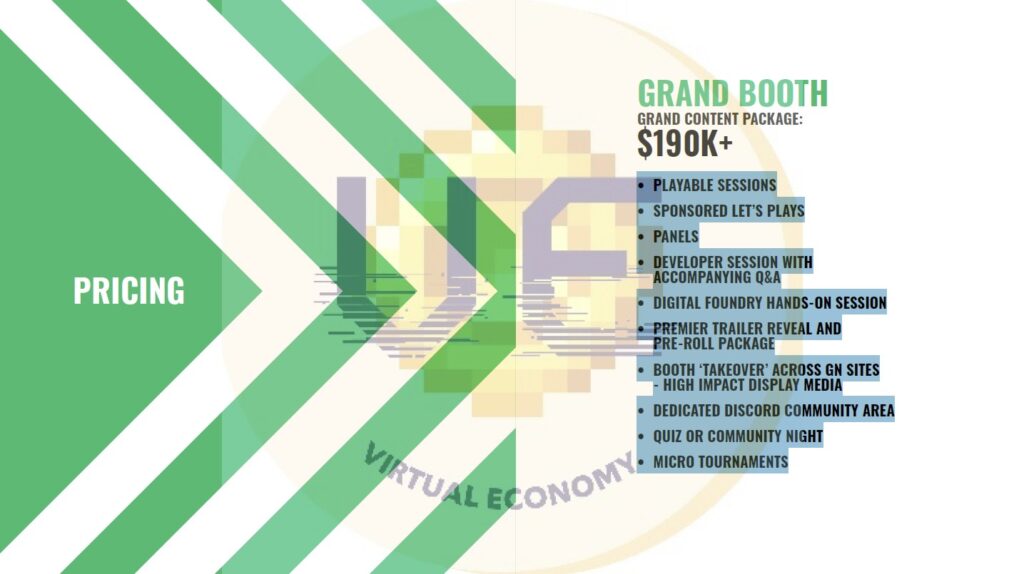
For about the same amount of money, you could purchase most of the optional marketing items we mentioned above. This is most definitely a value mis-match. When we’re talking “bang for the buck,” it’s a comparison between a bundle of dynamite and a kid’s cap gun.
But let’s focus in on the Intermediate Booth ($18,500) deliverables, since that’s what many of the exhibitors seem to have purchased (unless ReedPop up-sized their “digital booths” to make the event look more robust):
- Digital Booth on the show floor (306×200 pixels)
- Display media driving users to the digital booth
- Booth takeover on Gamer Network sites (Eurogamer, US Gamer (RIP), GamesIndustry, etc.)
- Playable Steam Demo*
- Event Homepage Promotion Spotlight
- A Spot in the editorial AA showcase video
- Panel
- Micro Tournaments
- Booth includes
- Hero video and/or trailer
- Written introduction
- Asset carousel
- Game logo
- Developer logo
- Link to playable demo on Steam
- Links to social channels
- Mention of any panels exhibitor is running
*We pointed out to ReedPop that developers and publishers do not require an event company to get them a Steam demo. ReedPop tells us that the “playable Steam demo” offering was removed from the deck along the way for that reason.
The core of the offering is the “digital booth.” Here are two examples of what those looked like during the event:
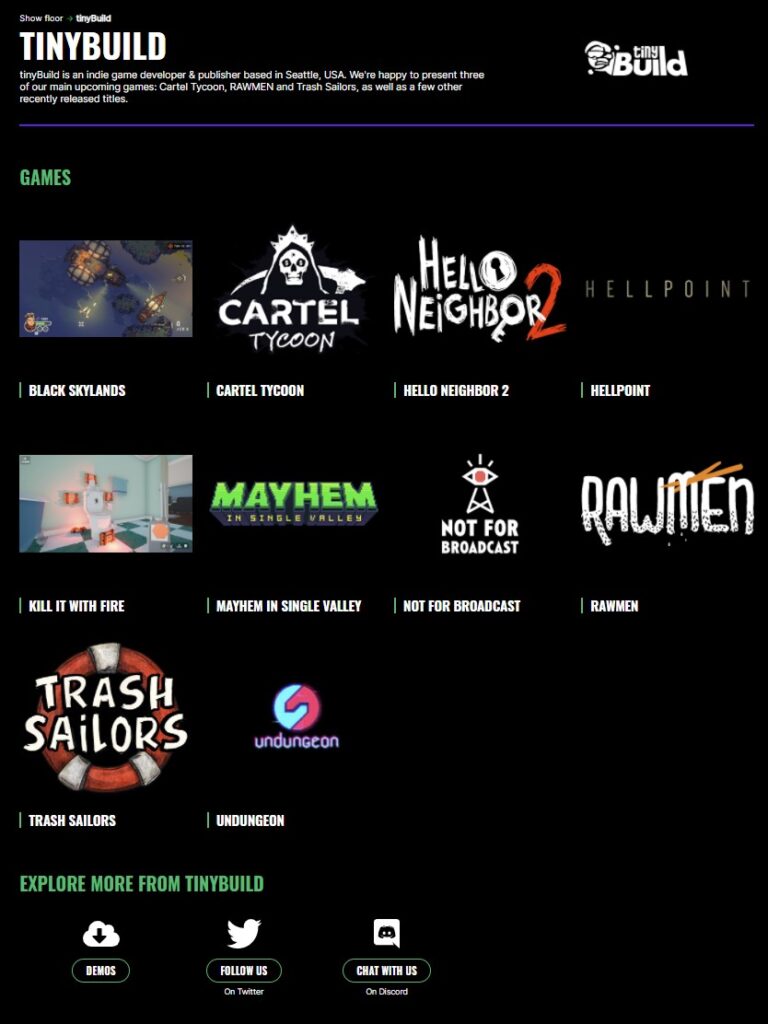
TinyBuild “Digital Booth” 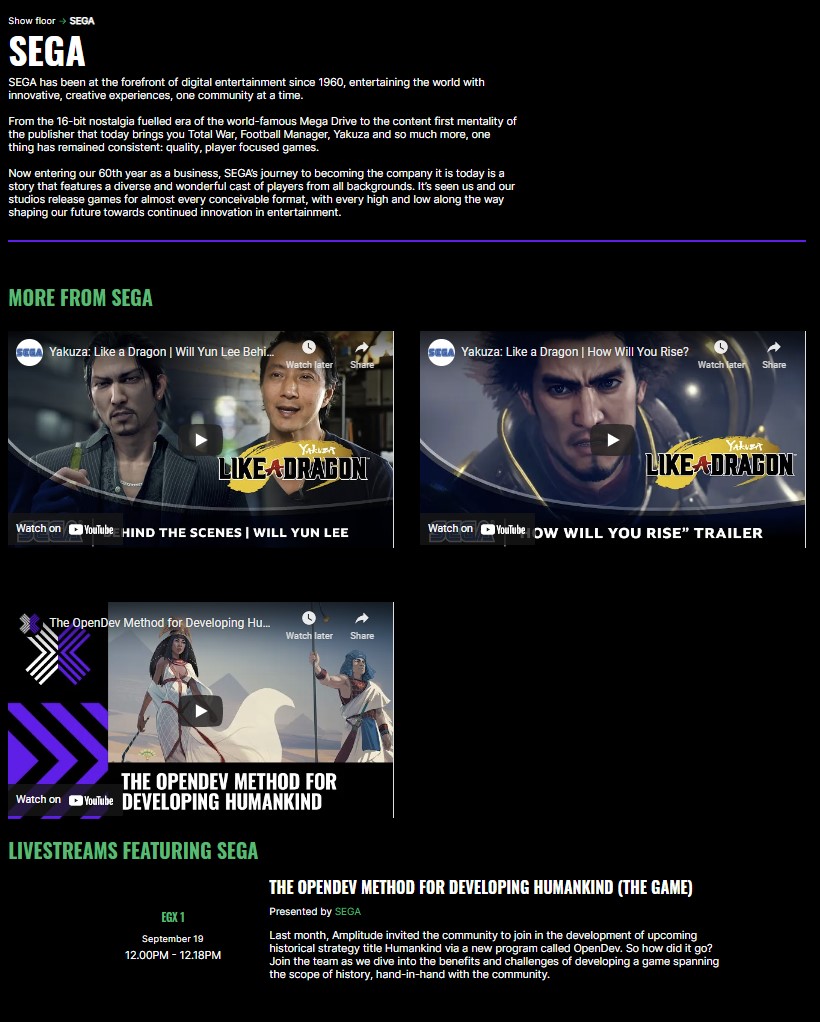
Sega “Digital Booth”
These are effectively just webpages.
Going down the list of what the booth includes, the video/trailer, written introduction, assets, logos, playable demos, and links to social channels are all items that the exhibitor has to provide. Unlike a real show floor though, there is no foot traffic and no physical space to attract attendees.
At physical events, exhibitors can directly capture attendee contact information for mailing lists and follow-ups. At a digital event, there’s none of that, meaning any contact information received from ReedPop after the show is unqualified (not specific to interest in your offering).
When we spoke with ReedPop following PAX Online, the company told us that it generated “millions of impressions” from exhibitor demos and “millions” of panel views. ReedPop also said that during the event, its Discord server was in the top 1% in size and engagement.
Sources told us that detailed data and contact information was not provided by ReedPop. Instead, exhibitors only received a single data point: page views for their “digital booth.” With a detailed breakdown for each exhibitor, it’s impossible to know if participating was a valuable investment of limited resources.
In order for ReedPop to make PAX Online 2021 a valuable investment for exhibitors, it needs to offer up more than a webpage. Something like Boston FIG’s interactive show floor with avatars and (opt-in) location-based video and audio depending on where your digital persona was at the show would make it feel more like a real event experience.
Additionally, ReedPop must do better with its data and analytics. The PAX Online “digital booths” provided little to no value add for exhibitors that could be measured and leveraged to further promote games and services.
We also note that the PAX Online pitch and PAX South/East fee schedules offer up panels for purchase. While it’s not uncommon for shows to hold sponsored panels, it is perplexing that PAX would choose not to disclose paid appearances. GDC, for instance, clearly marks sponsored panels.
We asked ReedPop why it did not disclose to attendees which of its panels were sponsored and which were selected from community submissions. The company did not directly address our inquiry, but did address the matter tangentially.
“PAX Online and EGX Digital are commercial entities, including the shows’ websites, Twitch, and YouTube channels,” a ReedPop representative told us. “Exhibitor content running on those channels is not considered sponsored, it is an extension of the exhibitors’ presence at the show.”
There is opportunity in digital events, but operating them through the lens of physical events without investment in technology, exhibitor care, and analytics doesn’t work. Exhibiting at a show is an investment of precious marketing resources, and for PAX Online 2021 to succeed, ReedPop must offer return on that investment.
Communicate, Communicate, Communicate
Sales is a combination of price, value, and communication.
One piece of feedback we heard echoed from a number of PAX Online 2020 exhibitors is that ReedPop simply dropped the ball on communication. The company reached out to developers and publishers and then, by many accounts, ghosted them.
“It was a pretty rough start with them,” one exhibitor tells Virtual Economy. “We actually had reached out several times to express our interest in participating and did not hear back for literally months. Finally, just 2.5 weeks before the event, our emails were answered.”
Others told us that they did not receive links to their “digital booth” and other information until after the event started. ReedPop was scrambling to fill panel slots right up until the event began, letting alternates know they were needed, but only giving them 48 hours to film the panel and submit for a chance to be included.
At that point, the schedule had already been released, with prospective alternates absent. With no promotion at all, it was a one way street of providing content to ReedPop with nothing in return.
I went through this process, and it was the exact opposite of the well-oiled, seamless PAX live event panel cycle: submission, timely notification of being accepted or declined, clear instructions for updating panelists and details, and perfect information about when and where to be on the day of the event.
Across the board, ReedPop must do better for its exhibitors and community panelists. The PAX panel experience at a live event is one of the most fulfilling I’ve experienced. Panels are crucial part of PAX, and capturing that energy for PAX Online 2021 is a must for success.
Welcome Home
With an entire year to prepare and 15 years of experience in the event industry, I am hopeful that ReedPop can pull it together. If you are a developer or publisher thinking about how to invest your limited marketing dollars, know that it’s okay to ask questions (and expect answers).
Event organizers that are charging you for your participation need to earn your money. Here are some things you should ask up front:
- How will analytics be delivered to you after the event?
- What data points will be provided and when? Will they be unique to your presence?
- How is the organizer promoting the event and how are they investing in your success as an exhibitor (technology, marketing, PR for the event, etc.)?
- What value is the exhibitor adding to your marketing initiatives?
- Internally, how much would it cost you to do the same thing being offered on your own?
- How is the event organizer justifying their costs?
- How is the event organizer leveraging critical mass to support individual exhibitors in lieu of foot traffic?
Remember, events (especially digital events) need to be the right fit for you. Make sure you’re reaching your target audience in the ways that best support a successful launch for your game.
For more on this, listen to Episode 61 of the Virtual Economy Podcast.
